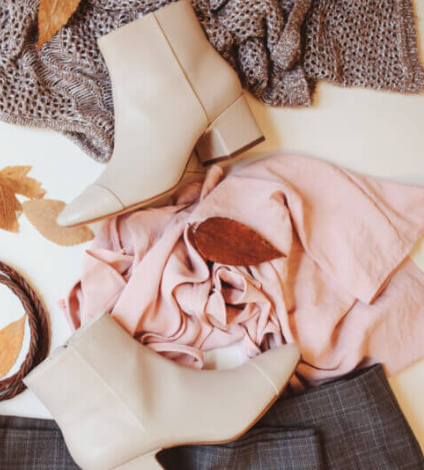
The Ultimate Guide to Preparing Your Wardrobe for Autumn
As the summer fades and the cooler months approach, it’s time to start transitioning your wardrobe. The kids are back at school, the summer holidays are over, and it’s the perfect opportunity to refresh your closet. This process, which we like to call the “Autumn Wardrobe Transition,” involves clearing out summer clothes, prepping your cozy sweaters and cashmere for the winter, and taking care of your garments to avoid unwanted pests like clothes moths.
During the cooler months, central heating can keep moths active, making it essential to protect your clothes. You don’t want to pull out your favorite summer pieces next year and find them covered in holes from moth larvae. Here’s our step-by-step guide to swapping your summer wardrobe for winter while keeping your clothes safe and in great condition.
1. The Big Wardrobe Clean-Out
Take advantage of the end of the season to declutter your summer clothes. Go through your sun dresses, swimsuits, shorts, and other warm-weather essentials. Ask yourself if you really want to see these items next summer. If not, it’s time to say goodbye. Follow our quick guide to make this process easy and efficient.
2. Clean Everything
Before storing your clothes away, make sure everything is clean. Moths love sweat, which is why it’s important to wash or dry clean anything you plan to store. You don’t want to provide food for these pests, so ensure your garments are fresh and free of any summer grime.
3. Tidy Your Storage Spaces
Vacuum and dust any areas where you plan to store your clothes—whether it’s under the bed, in a wardrobe, or on top of a closet. It’s important to keep these spaces clean, dry, and free of dust. For added protection, spray your upholstery with a water-based linen spray to help keep moths away.
4. Refresh Moth-Repellent Products
Anti-moth products such as hanging sachets, potpourri cones, and diffusers lose their effectiveness over time, so be sure to replace them every season. This will help keep your wardrobe smelling fresh and ensure moths stay away.
5. Choose the Right Storage Materials
Avoid using cardboard boxes for storage, as they are not pH neutral. Acid-free tissue paper and acid-free storage boxes are the best choice, as they don’t react with the chemicals in your clothes. Regular cardboard can be too alkaline, which can damage your garments over time.
6. Wrap Delicates Properly
For delicate items like cashmere, always wrap them in acid-free tissue paper. This protects the fabric from dust, moisture, and helps preserve the original color of your garments.
7. Avoid Plastic Bags
Don’t store your clothes in plastic for extended periods. When stored in plastic, temperature changes—such as the fluctuations caused by central heating—can lead to condensation inside the bags. This moisture can damage the fabric, causing mildew or yellowing on light-colored clothes. Try to limit plastic use and opt for breathable alternatives instead.
8. Line Drawers and Cupboards with Moth Repellents
To keep moths at bay, line your drawers and wardrobe shelves with anti-moth drawer liners. This added layer of protection ensures your clothes stay safe from pests while stored.
9. Store Clothes in the Right Place
Store your clothes in a well-ventilated, dry, and dust-free space. It’s important that your storage area is kept away from direct sunlight and damp conditions to prevent fabric deterioration.
10. Keep Clothes Out of Direct Sunlight
Avoid storing clothes in direct sunlight, as it can cause fabrics to fade and weaken. Instead, make sure your clothes are kept in a shaded, cool area, especially during the rainy months, when the weather will naturally provide protection.
What to Avoid When Storing Clothes
- Dampness: Ensure your storage areas are dry and ideally have double-glazed windows to prevent moisture.
- Direct Sunlight: Use good-quality blinds to shield clothes from the sun’s harmful rays.
- Unpleasant Smells: Keep your clothes away from the kitchen or areas with ventilation outlets to prevent absorbing unwanted odors.
- Inaccessibility: Store clothes in places you can easily reach and access. Out-of-sight garments are often forgotten or neglected.
- Bulky, Unnecessary Items: Avoid storing large, unused items like ski gear or heavy winter coats if they’re not needed.
By following these steps, you’ll protect your wardrobe, ensure your clothes stay in excellent condition, and make the seasonal transition a breeze.






